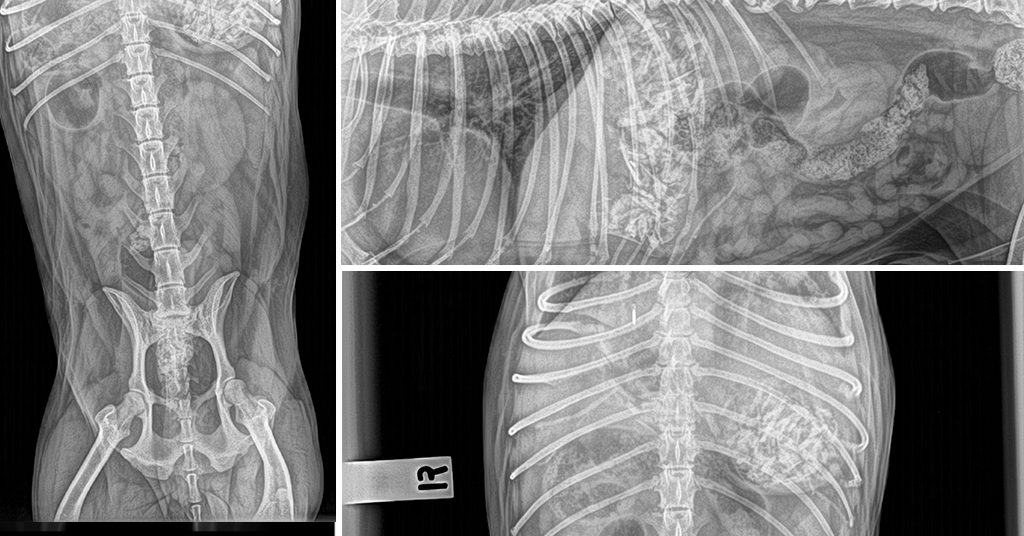When you’re advised by your vet that your pet needs X-Rays – you’re probably not thinking about much else other than worrying about what’s going to show up on them.
That’s Understandable
So when the vet comes back into the consulting room, shows you the X-Rays and says that everything looks normal and there’s nothing to worry about, you’re relieved. Obviously some things have been ruled out by not showing up on X-Ray meaning something else is causing whatever problem your pet is experiencing OR something has been missed!
X-Rays are a really important tool in Veterinary practice as they can reveal quite a lot about your pet’s inner anatomy. However, to be useful in the diagnostic process – they do need to be what we call “diagnostic quality.”
Not all X-Rays are the same
High quality X-Rays rely on a combination of things which include:
- Quality of Equipment – Modern X-Ray machines take incredibly detailed images (They’re also way more expensive than their older models)
- X-Ray Technique by the user (Veterinarian / Technician) (Settings, Positioning, Views) and
- Patient Compliance (Keeping your pet still and in exactly the right position for the intended views) That’s where sedation and / or anaesthesia come in!
Unlike having X-Rays yourself – our patients don’t keep still on command while the vet disappears behind the protective screen to press the buttons. Our techniques require more “hands on” contact with the patient while at the same time keeping ourselves protected from the rays using special personal protective equipment (PPE)
Wriggly patients cause blurry images which don’t help your vet make the best decisions. As for injured patients – we can’t always position them correctly without hurting them so that’s often the reasons for “chemical restraint” aka sedation or anaesthesia.
When we take X-Rays we aim for diagnostic quality images that tell the full story. Images need to be clear, crisp and detailed so we don’t risk missing something important.
Last but not least there is – professional interpretation. Some vets are more experienced in X-Ray interpretation than others.
All these factors combined mean that there are no “Standard” X-Ray fees across the veterinary profession. Each clinic charges fees according to their own specific protocols.
It’s also why we can’t quote on X-Rays without first seeing your pet. We can’t predict what type views we need without doing an examination first.
Our Protocols
Depending on the views we need, your fees may include some type of chemical restraint such as sedation or Anaesthesia and possibly Pre- Anaesthetic blood tests. so be prepared for these additions if required.
Your Rights
You have the right to see, get a copy of your pet’s X-Rays and have them thoroughly explained to you. Thankfully – most X-Rays these days are digital so it’s easy to create disc or electronic copies.
You can also get a second opinion on X-Rays such as a Specialist’s interpretation – if you wish.
Sadly – most people never question X-Ray quality or techniques even though cheaper, low quality X-Rays can lead to all kinds of false interpretations and place your pet’s health at risk. We say this because we have seen these many times in our second opinion consultations. This is especially common in orthopaedic conditions.




